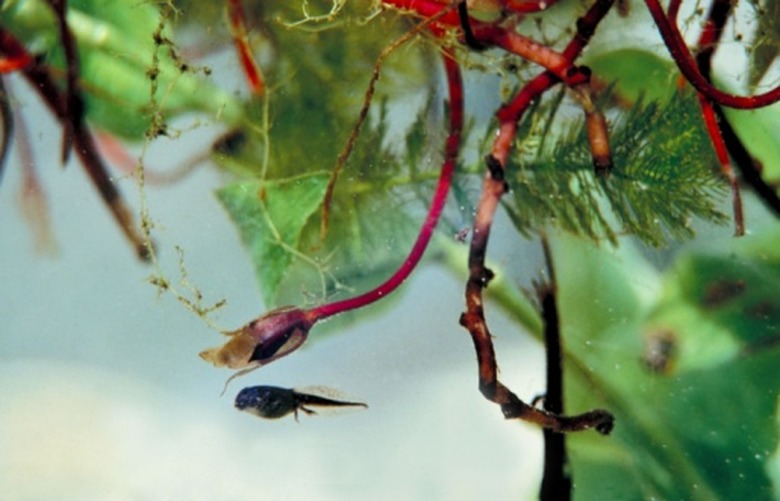What Kinds Of Frogs Are Black Tadpoles?
In springtime, if you are lucky enough to live in such an area, you may experience one of nature's many wonders: frogspawn. As a kid, you may remember taking to the local streams and ponds in search of ever-elusive tadpoles. Also known as pollywogs, tadpoles are born in many different shapes, colors and sizes, generally denoting their stage of metamorphosis and their species. One interesting type of tadpole is generally all black — the toad, or in this stage, a "toadpole."
Identifying Toadpoles
Identifying Toadpoles
One distinguishing factor in toadpole identification is the color of the tadpole. Toadpoles are all black, whereas frog tadpoles are generally brown or even green. Another factor to consider is size. Though toads can grow to be quite large, their toadpoles tend to be quite small — less than 1 inch in length. They are certainly much smaller than bullfrog tadpoles. They also tend to be found in groups of many more than frog tadpoles because they are not preyed upon as much as the frogs.
Before Tadpole Stage
Before Tadpole Stage
Before becoming tadpoles, frogs and toads start in eggs. The difference that can help identify the tadpoles later is the style of eggs. Frog eggs are generally laid in gelatinous bunches, like grapes, whereas toads lay long strings of eggs that look like black beads connected by clear jelly.
After Tadpole Stage
After Tadpole Stage
Toads, unlike frogs, spend the majority of their lives on land. For this reason, you may find young toads farther from a main water source than their frog brethren. Frogs live the majority of their lives in, around and under the water. In fact, toadpoles may be found in very small pools of stagnant water during springtime. Whether in a pond or a small pool, toadpoles stick to shallow water, near banks and areas in which there are plants to swim through and hide in.
Caring for Toadpoles
Caring for Toadpoles
The life cycle of a toadpole is similar to that of a frog. If you are raising toadpoles, feed them regular tadpole food, or even some form of fish flake. Make sure that when they are ready to leave the water (6-9 weeks after hatching) they have a place to get out onto land, and are not stuck in the well of a container. From there on the small toads will catch insects and fend for themselves, generally, as long they are allowed to live outside.
